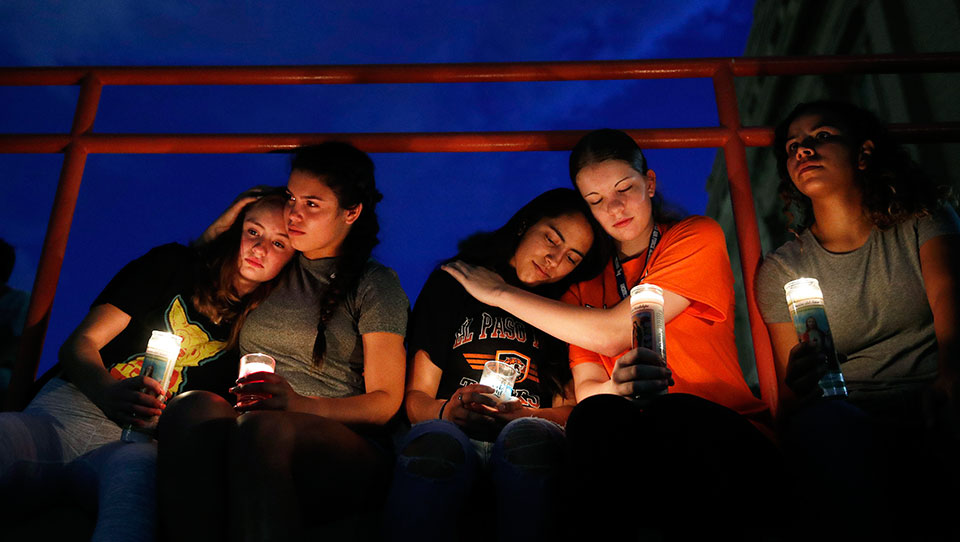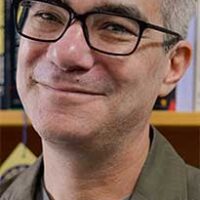
If ever there was a moment of clarity for us, it’s now.
As we witness and grieve the carnage of two back-to-back mass shootings, we cannot afford to ignore the clear signs that the ascendance of white supremacy in our nation is all too real. 2018 saw a national increase in hate crimes, with nearly all extremist homicides carried out by the far right. Last May, the head of the FBI’s counter-terrorism unit, Michael McGarrity, testified to Congress that the bureau was investigating about 850 cases of domestic terrorism. Read this again: 850. We know conclusively that white nationalist extremists have killed more people in the United States than any other category of domestic extremists since September 11, 2001.
Many of these crimes might seem different on the surface: When a white supremacist killed nine Bible study students at Mother Emanuel Church in Charleston, S.C., the victims were African American; when eleven worshippers were gunned down by a white supremacist at the Tree of Life Synagogue in Pittsburgh, the targets were Jews; the white supremacist who killed 20 at an El Paso mall last Saturday was gunning for Latinx immigrants, according to his manifesto. And within 24 hours another mass shooting occurred in Dayton, Ohio, the motivation of which is still unclear as of this writing.
We can’t deny the influence of one massacre on another. One empowered white male with guns is invariably followed by another. Indeed, the manifesto attributed to the El Paso gunman is clearly inspired by the New Zealand shooter’s manifesto, which promoted a white supremacist theory called “the great replacement”—an ideology that claims elites in Europe have been working to replace white Europeans with immigrants from the Middle East and North Africa. This is akin to the “white genocide” theory affirmed by the Pittsburgh shooter.
The needs of this moment could not be clearer. The time has come for a structural intervention. We should rightly expect every branch of government to take clear and unmistakable actions to halt the growth of white supremacy in our nation. We must demand of every politician, every media figure, every pundit and faith leader to name and call out this toxic racism wherever it may come from, including—especially—when it comes from the White House.
It can no longer be up for debate whether or not our president is emboldening this rise in white supremacy and the increase in mass shootings. He is. There is no way to question this in good faith. The same person who inspired a crowd to chant “send her back” to Somalian-American Representative Ilhan Omar, the same person whose tweets are increasingly racist, the same person who welcomes white supremacists to the White House, is more than a part—a huge part—of the problem. He is the catalyst to much of this violence.
But this is also a time of action—a time to stand up and reach out to those who are being targeted. And those of us who are members of these targeted minorities must stand in common cause and solidarity with one another. For instance, as a Jew, I cannot begin to say how heartened and supported I felt when, in the wake of the Pittsburgh synagogue shooting, I learned that the Muslim American community responded immediately by raising hundreds of thousands of dollars to support the families of the victims.

I am likewise proud of the work of Never Again Action, a new Jewish network working with local allies around the country to organize actions of civil disobedience at ICE detention centers. History will judge how we responded in this time, and we are now well past the wake-up call. We must prioritize the fight against white supremacy in this country and beyond.
This weekend will mark the Jewish observance of Tisha B’Av (the “ninth of the month of Av”)—a fast day that mourns the tragedies that have befallen the Jewish people, symbolized by the destruction of the ancient Temple in Jerusalem. One of the central lessons of this day is that the Temple was not destroyed by any external enemy but by the sinat chinam—“baseless hatred”—that ultimately destroyed the Jewish community from within.
This Tisha B’Av, I am all too aware of the toxic sinat chinam of white supremacy that is so clearly on the rise, corroding our nation and our global community. At the same time, I cannot but redouble my commitment to the growing diverse social justice movement in all its forms, welcoming and uniting our struggles, mourning our losses and striving to protect one another, over and over again.
During this horrible, clarifying moment, I take heart in the sacred power of solidarity.
Reposted from his blog by permission of the author. This also appeared in Newsweek.












Comments